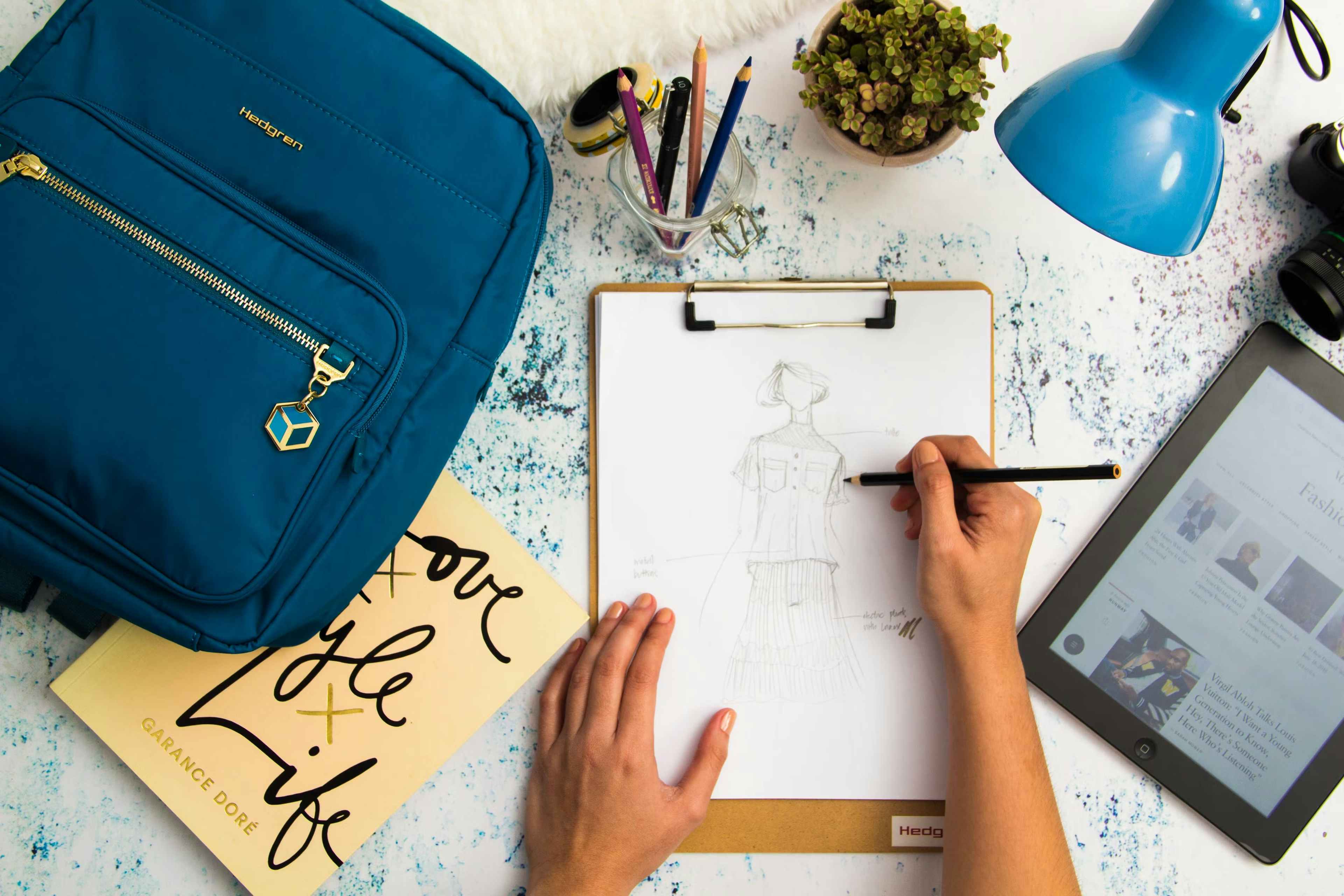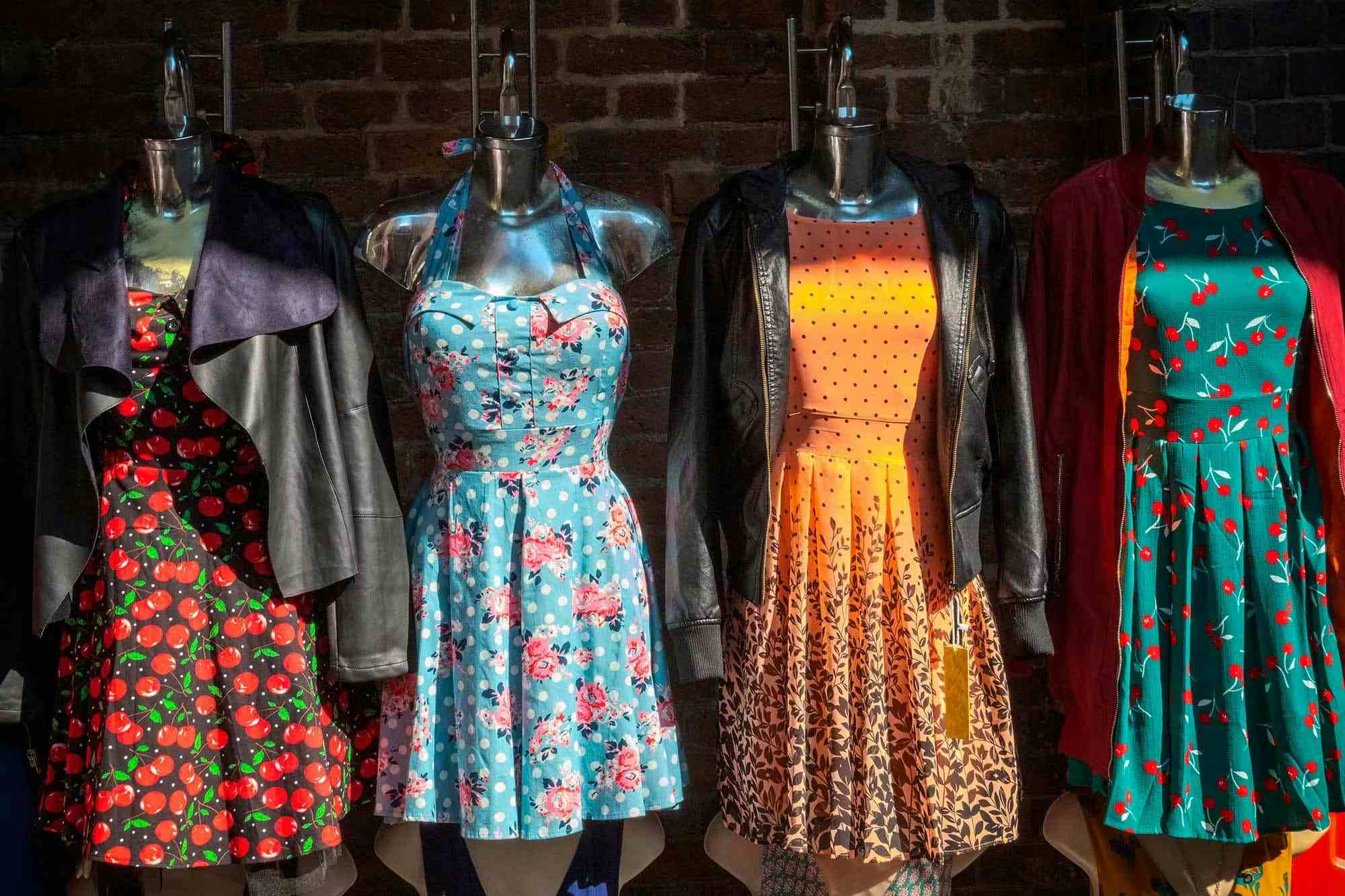How to Make a Good Portfolio for Fashion Design

“Style is a way to say who you are without having to speak.” ~Rachel Zoe
What is a Fashion Design Portfolio?
Do you see yourself with a career in fashion? Have you always loved creating your own clothes or unique looks, even perhaps as a child? As you plan how this passion might become a career, know this—a fashion design portfolio is an absolute necessity.
As with any creative field, fashion design utilizes portfolios to showcase skills. It can include illustrations, fabric swatches, photos, and artwork, but above all it needs to tell a story. A portfolio is a must, whether you are a designer already in the field or a student who seeks entry into a fashion design school. In essence, the portfolio is your visual resume.
Business of Fashion recommends that your portfolio demonstrate originality and knowledge of fashion markets. It should have a signature style and a narrative. Most important today, your portfolio needs to highlight your ability to use nontraditional skills and digital tools, such as Adobe Illustrator.
Digital Fashion Portfolio vs. Tangible Fashion Portfolio
We live in the digital age. A digital fashion portfolio is not only necessary, but practical. With the assumption that your portfolio needs to be shared with multiple schools or businesses, a digital version allows for easy sharing and updating. Plus, you may require multiple versions of your portfolio, each tailored specifically to the audience who will review it.
Although this idea may seem daunting to someone applying to fashion schools, there are numerous online digital platforms with all the tools you need. According to a recent post, basic skills in Illustrator or Photoshop will serve you well. Photoshop is the most common editing program in the fashion industry. After you scan your image, Photoshop allows you to play with the colors, draw new lines, add text, and crop and collage images together. It’s a powerful tool for endless amounts of creativity. If you haven’t taken a Photoshop class, many high schools offer Photoshop as part of the curriculum. It’s worth looking into.
However, a tangible portfolio is also important. Being able to see the colors and fabrics firsthand elicits a certain response. Also, more traditional design professionals may prefer the hands-on experience that a tangible portfolio provides. One word of caution, however—never leave your portfolio with someone else. It’s too valuable to you.
Creating a Fashion Design Portfolio for College Admission
To this question, we turn to the experts. Parsons School of Design is a leading educator of fashion designers. To qualify for admission, students must create a portfolio that meets specific standards:
- Freshman and transfer applicants must submit a portfolio of eight to 12 images.
- Portfolios can include a range of media such as drawing, painting, sculpture, fashion design, animation, performance, graphic design, or sketchbook pages.
- Portfolios must show experimentation and breadth, but does not need to specifically address the major to which a student is applying.
- The portfolio must be completed online only.
- It is smart to show that you are up on the latest trends, such as sustainability. According to Green Dreamer, “sustainable fashion refers to clothing that is designed, manufactured, distributed, and used in ways that are environmentally friendly.” This is a hot topic as the fashion industry has been criticized for ‘throwaway products.’
- Finally, choose a color palette for your portfolio. One recent report states that purple is the “fashion color” of 2022.
What should be in a fashion design portfolio?
There is no “one-size-fits-all” portfolio!
For high school students considering a career in fashion, individuality and demonstrating what sets you apart is essential in such a competitive field. The portfolio should communicate the applicant’s personality and viewpoint. It should be personal and conceptual, rather than generic. In other words, take chances. Much like the personal essay, a student portfolio introduces you to the admissions committee.
Here’s some questions to consider:
- Does this work represent my point of view or tell a story?
- Are my explorations extendable to other mediums, such as film or painting?
- Does the portfolio reflect my process of ideating and creating my work?
- Does the work include areas where I have taken artistic risks or stretched to meet a challenge?
- Does this portfolio look like I made the work? (Or does it look like a collection of assignments similar to my peers in class?)
How long should a portfolio be?
While there isn’t really a formula on the length of a portfolio, it’s vital to include a wide range of items that demonstrate your skills—it’s about quality not quantity. Be thoughtful in what you include and break it down into sections, including:
- An eye-catching cover: The first impression people will have of you starts with the cover. Entice your reviewers to investigate more by creating a cover that speaks to who you are as a designer. One creative designer even used Youtube to share her first portfolio, which she designed as a purse. Learn how this set her apart.
- All about you: Include a contact page with an introduction to who you are, your ideas, your personal goals, and the process you used to create the portfolio.
- Ideation: Hand sketches to show the evolution of your work.
- Inspiration: Concept mood boards to explain what inspires you—remember to focus on your chosen color palette.
- Photos: Do you have any photos of completed looks? This could easily be just you standing against a white background.
- Technical pack (called a tech pack in the industry): this is a blueprint or step-by-step guide to how a garment was made. Although this isn’t necessary for a student portfolio, it will be necessary for those in the industry. The tech pack should include sketched silhouettes, fabric swatches, digital Illustrator examples that are accessorized, and any vital instructions to creating the look.
Don’t be afraid to include other creative work that you’re proud of. Fashion is, at its core, an art form and creativity comes in many forms. Showcase any other relevant skills that set you apart from the competition, such as drawing, sculpture, or photography.
How to Present Your Fashion Design Portfolio
When it comes to presenting your fashion portfolio digitally, there are many options from which to choose:
- PDFs and Powerpoint: This is the simplest of options, using a scanner to upload images and convert them to PDFs. From there, you can create a Powerpoint presentation showcasing your work.
- Digital Flipbook: This allows you to showcase conventional digital PDFs and display content left to right with a page flipping animation, as opposed to the scrolling nature of a PDF. Some digital flipbooks also allow you to embed your voice. Then, you can talk the viewer through your ideas. By telling the story of your collection in your own voice, you are in fact making a personal connection—sharing your story and your personality.
- Website: If you’re lucky enough to know how to design a website (or have a friend), this is a great option. Although, hosting a website costs money and may not be the most frugal choice.
- Free Online Portfolio Host: There are sites available to host your portfolio for free, such as Carbonmade and Styleportfolios.
If you are presenting a tangible portfolio in person, start with your introduction as described above and talk through the thinking behind the look, the process you used to get there, and the story behind your work.
Fashion Design Portfolio Examples
A simple Google search leads to a multitude of portfolio examples. Pinterest is also a fabulous resource to glean ideas, including “48 of the Best Student Fashion Portfolios,” according to the Council of Fashion Designers of America.
Remember, fashion design is a highly competitive business. And it starts with getting into design school. Your portfolio must set you apart immediately, so be creative. Make your portfolio a personal story about how you landed on the main idea, the process you use to expand your collection, and the audience you are trying to reach. Be current with trends that matter, such as sustainable materials. The more you’ve researched your designs, the better your chances to achieve your goal—entry into the world of fashion.
Recommended Articles


College Prep
10 of the Best Summer Online Programs for College-Bound High School Students
Read Article